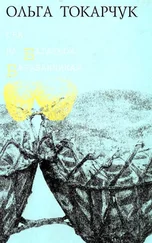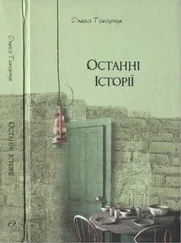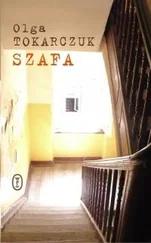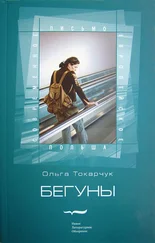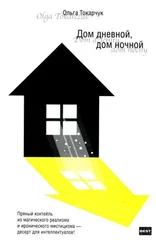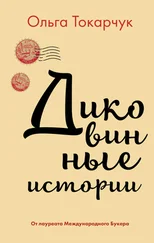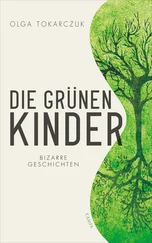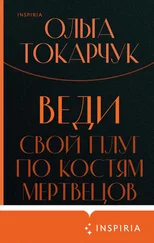‘This young woman was hung,’ said Ruysch, and he raised the body to show us the neck; indeed, you could see a horizontal trace, barely a dash, hard to believe it might have been the reason for her death.
At first he focused on the organs in the abdominal cavity. He discussed in detail the digestive system, but before he moved on to the heart, he let us look into everything below, where from beneath the mount shone the uterus, enlarged after giving birth. And everything he did, even to us, his colleagues, belonging to the same guild, looked like a magic show. The movements of his bright, slender hands were circular, fluid, like on those fairground wizards. Our eyes followed him, fascinated. That small body opened up before the audience, revealed its secrets, trustingly, believing that such hands would not do it harm. Ruysch’s commentary was brief, coherent and comprehensible. He even joked, though gracefully, as though without lessening his dignity. Then I also understood the essence of this presentation, its popularity, Ruysch with these round gestures was transforming the human essence into a body and before our eyes undressing it of mystery; breaking it down into prime factors as though taking apart a complicated clock. The threat of death slipped away. There’s nothing to be afraid of. We are a mechanism, something like Huygens’ clock.
After the show people left in silence and fascination, and what remained of the body was mercifully covered with that same fabric. But after just a moment, outside, where the sun had completely chased away the clouds, they began to talk more boldly, and the audience – including ourselves – went to the magistrate for the banquet prepared for this occasion.
Filip remained gloomy and silent and did not appear at all interested in the delicious food, wine and tobacco. To tell the truth, I wasn’t in the mood myself. It would be wrong to think that we anatomists approach each dissection as though it were part of our daily order. Sometimes, like today, something is ‘raised’, something I myself call ‘the truth of the body’, an odd conviction that despite the evidence of death, despite the absence of a soul, the body left to itself is a kind of intensive whole. Of course the dead body is not alive; what I mean is more the fact of it remaining in its form. Form is in its way alive.
That lesson of Ruysch’s marked the beginning of the winter season, and now at De Waag there would be regular lectures, discussions, demonstrations of vivisections of animals, both for students and for the public. And if circumstances supply fresh bodies, public autopsies performed by other anatomists would also take place. Only Ruysch was able, for now, to prepare a body in advance, even two years in advance, as he’d said today (something I still find hard to believe) – and only he did not have to fear the summer heat.
Were it not for the fact that I accompanied him the next day on his way home – first by boat, then on foot, I would never have found out what it was that Filip Verheyen suffered from. But even so, what I heard from him seems strange and extraordinary to me. As a doctor and anatomist I had already heard several times about this phenomenon, but I had always attributed such pains to oversensitivity of the nerves, an exuberant imagination. Meanwhile I had known Filip for years, and no one could equal his exactitude of mind, nor the reliability of his observations and his judgements. An intellect applying the correct method can attain true and useful knowledge about the tiniest details of the world through the aid of its own distinct and clear ideas – this he taught us at the same university where fifteen years before the mathematician Descartes had lectured. Because God, perfect to the utmost degree, who provided us after all with cognitive faculties, cannot be a deceiver; if we use those faculties correctly, we must reach truth.
The pains came at night, starting a few weeks after the operation, as his body was relaxing and slipping across the uncertain boundary between waking and sleep, filled with travelling unsettling images, the travellers inside the sleeping mind. He would have the impression that his left leg was numb, and that he absolutely had to get it into the right position – he felt his toes tingling, an unpleasant sensation. He fidgeted, half-conscious. He wanted to move his toes, but the unperformability of that movement awoke him completely. He would sit on the bed, tear the blanket off himself and look at the aching place – it was some thirty centimetres below the knee, there over the rumbled sheet. He would close his eyes and try to scratch it, but he touched nothing, his fingers combed the void in despair, giving no relief to Verheyen.
Once, in a fit of despair, when the pain and itching were driving him mad, he stood and with trembling hands lit a candle. Hopping on one foot, he moved to the table the vessel with the cut-off leg, which Fleur, unable to convince him to transfer it to the attic, had covered with a flowery shawl. He extracted the limb and in the candlelight tried to locate in it the reason for the pain. The leg now seemed somewhat smaller, the skin browned by the brandy, but the toenails remained raised, pearlescent, and Verheyen had the impression they had grown. He sat down on the floor, stretched his legs out before him, and laid the amputated limb on the place just below his left knee. He closed his eyes and groped for the painful place. His hand touched a cold piece of flesh – but could not reach the pain.
Verheyen worked on his own atlas of the human body methodically and persistently.
First the dissection – the careful preparation of a model to draw, the unveiling of some muscle, bundle of nerves, the extension of a blood vessel, the outstretching of the specimen in two-dimensional space, the reduction to four directions: up, down, left and right. He used minute wooden pins to help himself render the complex more transparent and clear. Only then would he emerge, carefully wash and dry his hands, change his surface clothing, and then return with the paper and graphite graver, in order to make order on paper.
He did the dissections sitting down, trying in vain to control bodily fluids that ruined the clarity and accuracy of the image. He transferred the details to paper in hurried sketches, and then, now in peace, he would revise them carefully, detail by detail, nerve by nerve, tendon by tendon.
Evidently the amputation strained his health, because he often suffered from weakness and melancholy. The pain of his left leg, which troubled him ceaselessly, he termed ‘phantom’, but he was afraid to mention it to anyone, suspecting that he was the victim of some nervous illusion or of madness. He would no doubt have lost his high position at the university had anyone found out about it. Very quickly he began working as a doctor and was accepted into the guild of surgeons. His lack of a leg meant that he was called more often than others for any kind of amputation, as though his personal experience guaranteed the success of the operation, or as though a legless surgeon brought – if it could be called this – good fortune in disease. He published particular works on the anatomy of muscles and tendons. When in 1689 he was offered the position of rector of the university, he moved to Leuven, taking in his luggage the tightly packed vessel with the leg in its rolls of linen.
It was I, Willem van Horssen, who served as messenger, when several years later in 1693 I was sent by the printer to show Verheyen the fat edition of his first book – the great anatomical atlas, Corporis Humani Anatomia , still damp from the printer’s ink. It contained twenty years’ worth of his work. Every etching, perfectly executed, transparent and clear, was supplemented by an explanatory text, so that it seemed that in this volume the human body became some sort of mysterious procedure etched down to its very essence, relieved of easily spoiling blood, lymphs, those suspect fluids, the roar of life, that its perfect order had been revealed in the absolute silence of black and white. Anatomia brought him fame, and after a few years the work was revised in an even larger print run and became a textbook.
Читать дальше

